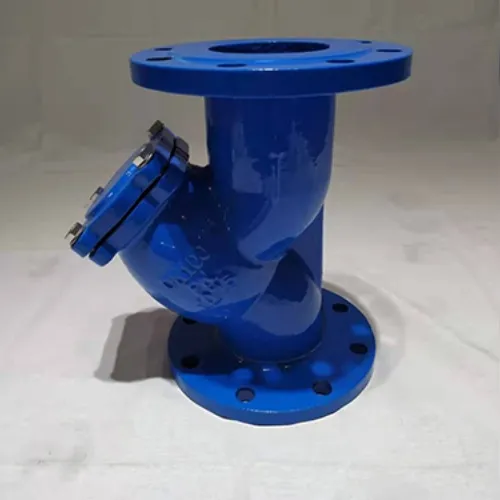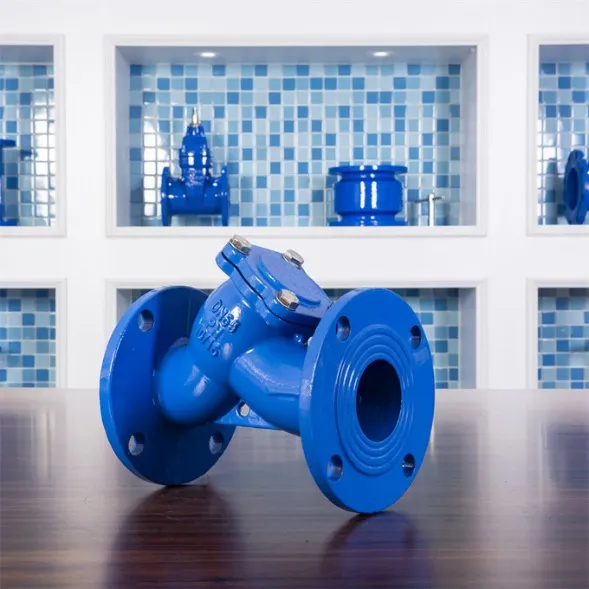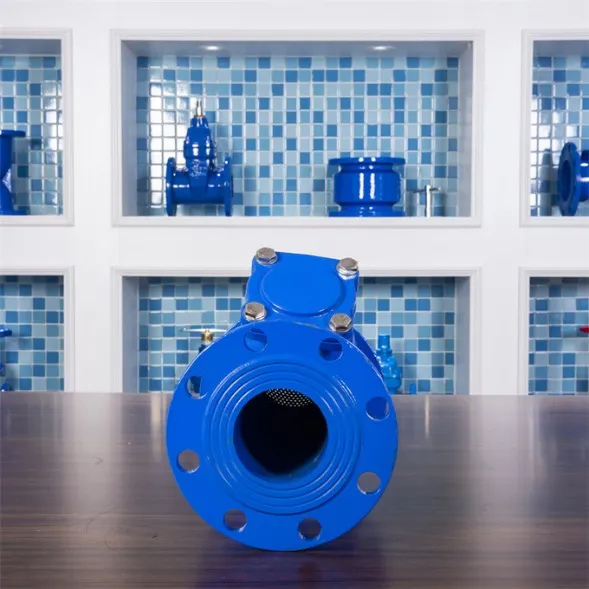May . 29, 2025 16:41 Laghachi na ndepụta
Exploring the Functionality and Applications of Y Type Strainers in Pipeline Systems
Pipeline systems across industries rely on filtration solutions to protect equipment, maintain efficiency, and ensure operational longevity. Among these solutions, Y type strainers stand out for their compact design, ease of maintenance, and adaptability to diverse environments. This article examines the role of Y type strainers, explores material-specific variants like cast iron Y strainers, and highlights the advantages of flanged strainers and flanged Y strainers in industrial applications.

Understanding the Type of Strainer: A Brief Overview
A type of strainer refers to a filtration device designed to remove debris, sediment, or particulates from fluids in pipelines. Common designs include basket strainers, duplex strainers, and Y type strainers, each suited to specific operational needs. Y type strainers, named for their Y-shaped body, are particularly valued for their space efficiency and ability to handle high-pressure flows.
These strainers function by directing fluid through a angled chamber containing a perforated or mesh filter screen. Solid particles are trapped within the screen, while clean fluid exits the outlet. Their simple yet robust design minimizes pressure drop, making them ideal for systems where uninterrupted flow is critical.

Y Type Strainer: Design and Operational Advantages
The Y type strainer is engineered for versatility. Its components typically include a main body, filter screen, and removable cover for maintenance. The angled orientation of the strainer body allows it to fit into tight spaces, a key advantage over bulkier basket strainers.
Key benefits include:
High-Pressure Tolerance: The streamlined shape reduces turbulence, making Y type strainers suitable for steam, gas, and high-pressure liquid systems.
Ease of Cleaning: The strainer’s cover can be detached without disassembling the entire pipeline, enabling quick screen inspection or replacement.
Material Flexibility: Stainless steel, brass, or cast iron Y strainers cater to different environmental conditions, from corrosive chemicals to municipal water systems.
Industries such as oil and gas, HVAC, and water treatment widely use Y type strainers to safeguard pumps, meters, and control valves from particulate damage.

Cast Iron Y Strainer: Durability in Low-Cost Applications
Cast iron Y strainers are a cost-effective solution for non-corrosive, low-pressure environments. The cast iron construction provides excellent durability and resistance to mechanical stress, making these strainers ideal for:
Water Distribution Networks: Municipal systems handling large volumes of water with minimal chemical exposure.
HVAC Systems: Filtration of cooling water or condensate to protect heat exchangers and chillers.
Irrigation Systems: Removal of sand and sediment in agricultural water lines.
While cast iron Y strainers are not suitable for acidic or high-temperature fluids, their affordability and robustness make them a practical choice for general-purpose applications. For corrosive environments, stainless steel or coated variants are recommended.
Flanged Strainer: Simplified Installation and Scalability
Flanged strainers feature flanged connections that bolt directly to pipeline flanges, eliminating the need for threaded fittings. This design enhances structural integrity and simplifies installation in large-diameter pipelines. Key advantages include:
Leak Prevention: Flanged joints with gaskets create a secure seal, even under vibration or thermal expansion.
Ease of Maintenance: The flanged cover allows quick access to the filter screen without pipeline disassembly.
Scalability: Suitable for high-flow systems in power plants, chemical processing, or wastewater treatment facilities.
Flanged strainers are often used in industries requiring frequent maintenance or system expansions, as their modular design supports seamless integration into existing infrastructure.
Combining the benefits of flanged connections and Y type strainer design, flanged Y strainers excel in demanding environments. Their applications span:
Oil and Gas Pipelines: Removing rust, scale, or welding debris to protect turbines and compressors.
Chemical Processing: Filtering aggressive fluids where leak-proof connections are critical.
Steam Systems: Withstanding high temperatures while maintaining minimal pressure loss.
The flanged Y strainer’s welded or bolted construction ensures durability, while materials like carbon steel or stainless steel enhance resistance to corrosion and thermal stress.
FAQS:About Y Type Strainers
What distinguishes a Y type strainer from other types of strainers?
The Y type strainer’s angled body allows compact installation in space-constrained areas, unlike horizontal basket strainers. Its design also reduces pressure drop, making it ideal for high-velocity flows.
When should a cast iron Y strainer be used over stainless steel?
Cast iron Y strainers are optimal for low-pressure water systems with minimal corrosion risk. Stainless steel is preferred for corrosive fluids, high temperatures, or hygienic applications like food processing.
What are the advantages of a flanged strainer in industrial settings?
Flanged strainers provide secure, leak-proof connections and simplify maintenance in large pipelines. They are ideal for systems requiring frequent screen cleaning or high flow capacity.
Can a flanged Y strainer handle high-temperature fluids?
Yes, flanged Y strainers made from materials like carbon steel or stainless steel can withstand high temperatures. Proper gasket selection (e.g., graphite) ensures seal integrity under thermal stress.
How often should the filter screen in a Y type strainer be cleaned?
Cleaning frequency depends on particulate load. Systems with heavy debris may require monthly inspection, while clean fluids might need checks only during routine maintenance.
From safeguarding critical equipment to optimizing flow efficiency, Y type strainers play a vital role in pipeline systems. Material choices like cast iron Y strainers offer budget-friendly durability, while flanged strainers and flanged Y strainers provide scalable, high-performance solutions. By selecting the appropriate type of strainer, industries can enhance system reliability, reduce downtime, and extend the lifespan of their infrastructure.
-
Why the Right Angle Ruler Reigns in MetalworkingAkụkọJul.21,2025
-
The Enduring Allure of Granite Boxes in Modern InteriorsAkụkọJul.21,2025
-
The Digital Gauging Revolution: Reshaping Thread Rings Inspection's FutureAkụkọJul.21,2025
-
How Modern Inspection Platforms Transcend Surface MeasurementAkụkọJul.21,2025
-
How Customization Drives Wholesale Success in Parallel RulersAkụkọJul.21,2025
-
Fortifying Permanent Steel Ground Anchors Against Corrosion's OnslaughtAkụkọJul.21,2025
Ngwaahịa ndị emetụtara









